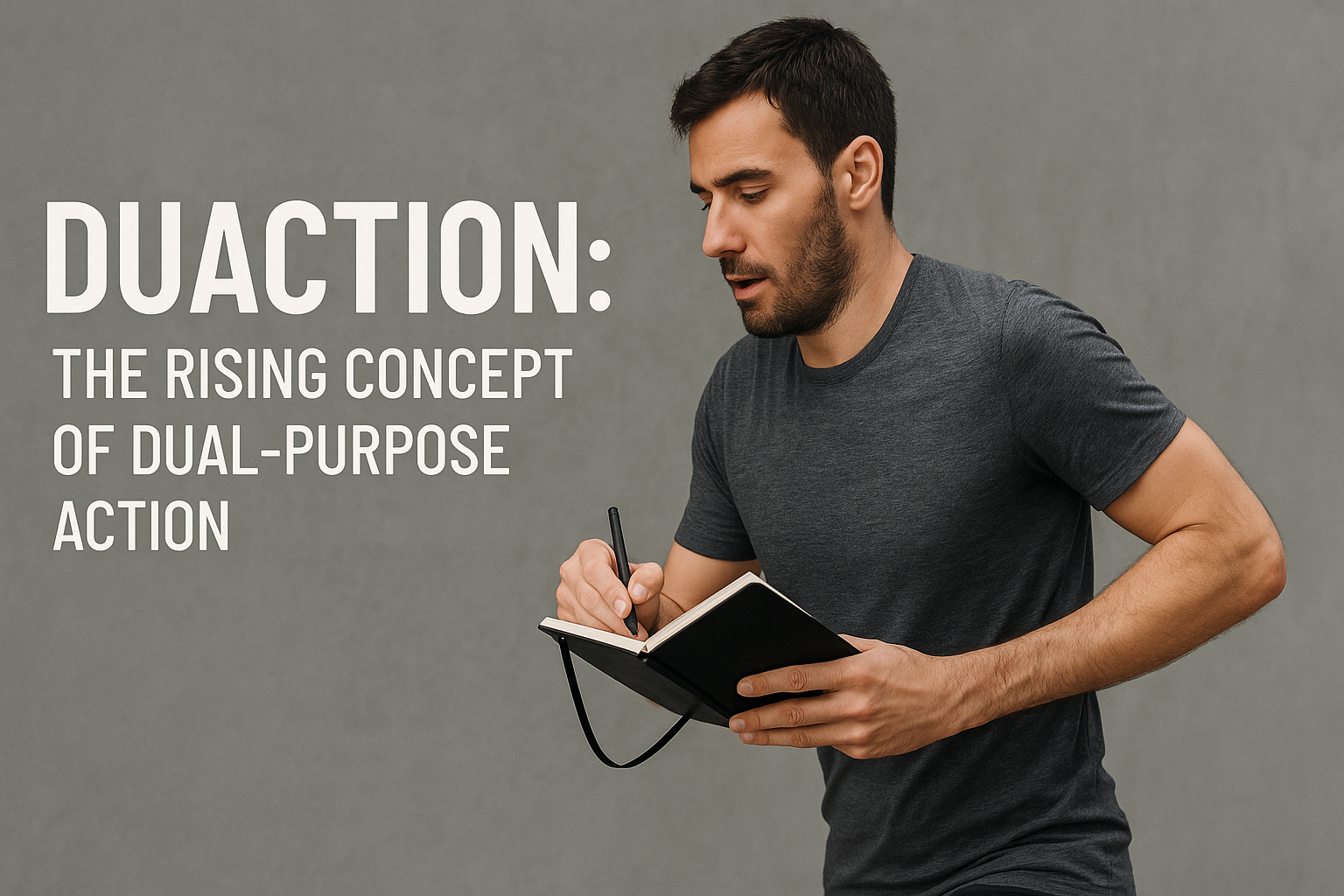Unlocking the Magic of Duaction: A Fun Way to Learn and Grow
duaction is like a secret superpower for learning and doing things better. When we talk about duaction, we are thinking about two actions working together — like reading and drawing at the same time, or listening and writing side by side. That mix helps our brains grow stronger, kind of like how mixing colors can make a new, brighter one. In this blog, you will see how duaction can turn boring into brilliant!
Imagine you’re trying to remember something for school. If you say it out loud while writing it, that is duaction at work — doing two simple things together to help you remember more. It’s not hard, but it is powerful. That’s why duaction can make learning fun and useful at the same time.
Second Paragraph
duaction can help kids and grown-ups too. When you do two tasks that go nicely together, like reading a story and acting it out, your mind keeps busy in a good way. That makes things stick better in memory. It’s like planting a seed and watering it while you sing — the seed grows fast and strong. You don’t need fancy tools or long hours; you just pair up skills that make sense together.
Also, duaction builds confidence. When you speak while drawing or sing while walking, you feel creative and bold. It’s exciting to mix things up and see what happens. Soon, you’ll use duaction every day—like reading recipes out loud while cooking, or practicing spelling while hopping on one foot! This fun way of doing things can help you learn better, smile more, and enjoy every little moment.
What Is Duaction? Understanding Two Actions Together
Duaction means doing two actions at the same time in a smart way. It is not about rushing or being busy for no reason. Instead, it’s about choosing two activities that work well together and help you learn, remember, or enjoy something more. For example, you might listen to a story while drawing a picture about it. Your brain uses both listening and drawing skills together, making the story stick in your memory. Duaction is like teamwork inside your mind — two actions supporting each other for better results. Anyone can try it, from kids doing homework to adults learning new skills. Once you understand duaction, you can find creative ways to use it in everyday life.
Why Duaction Helps You Learn Better Every Day
Duaction helps you learn better because it keeps your brain active in more than one way at the same time. When you mix two actions, like reading aloud while walking slowly, your mind focuses more and remembers things for longer. It’s like using two hands to carry something — it’s easier and stronger. Duaction can also make learning more fun. Instead of just writing words, you can say them, act them, or draw them. This makes lessons feel like games, and you enjoy them more. Whether you are in school, learning at home, or even doing a hobby, duaction can make your progress faster, your memory sharper, and your learning moments more exciting every single day.
Cool Duaction Examples You Can Try at Home
There are many fun ways to use duaction at home without needing special tools. You can listen to an audiobook while folding clothes, so your hands are busy, and your mind enjoys a story. You can read a poem while acting out its meaning, helping you understand it better. You can practice spelling words while jumping rope to keep your body active and your brain sharp. Cooking while talking about the recipe with someone is another form of duaction. Even singing while cleaning your room counts! The key is to choose activities that don’t fight for your attention but instead work together. With practice, you can find dozens of duaction ideas that make home time more productive and fun.
Duaction Tricks for School and Homework
Duaction can turn schoolwork into something more enjoyable and effective. For example, you can record yourself reading a lesson and then play it back while drawing pictures about the topic. You can study spelling words by writing them in colorful markers while saying them aloud. For math practice, you can solve problems while explaining each step to yourself, which makes your understanding stronger. Even group study can use duaction — reading a passage while one friend acts it out. This helps the whole group remember better. The secret is to connect two tasks so they help each other. By adding duaction to homework, you keep your brain more engaged, finish tasks faster, and remember your lessons much longer.
Duaction for Big People: How Adults Can Use It Too
Duaction is not just for kids — adults can also use it to save time and learn more. For example, you can listen to educational podcasts while cooking dinner or doing laundry. You can read work notes while riding an exercise bike. You can even improve your public speaking by practicing speeches while walking in the park. For busy adults, duaction turns boring chores into opportunities for growth. It helps you manage your time better and keeps your mind active while your body works. Whether you want to learn a new language, gain job skills, or just enjoy hobbies, combining the right two actions makes everything more effective and enjoyable for grown-ups too.
Simple Duaction Tasks That Feel Like Play
Some duaction tasks can feel more like play than work. Imagine learning new words while tossing a ball back and forth with a friend. You can practice counting in a new language while skipping rope. You can improve memory by listening to a song and drawing pictures that match the lyrics. These playful duaction activities don’t feel like lessons, but they help your brain learn faster. You can even do them with family or friends, turning learning into fun group time. The goal is to enjoy the process while doing two helpful actions together. When learning feels like a game, you naturally want to do it more, and that’s the real magic of duaction.
Tips to Make Duaction Fun and Safe
When trying duaction, pick two actions that are safe to do together. For example, you shouldn’t read while crossing a busy street, because your attention will be split in a dangerous way. Instead, choose activities that match well, like walking slowly while talking or drawing while listening to music. Start simple so your brain can adjust to doing two things at once. You can also set small goals, like trying duaction for ten minutes a day and slowly increasing the time. Remember, the point is to enjoy and learn, not to rush or stress yourself. With safe choices, duaction becomes a positive habit you’ll want to keep.
How Duaction Builds Brain Power and Confidence
Duaction builds brain power because it trains your mind to handle more than one skill at the same time without confusion. When you do this regularly, your brain becomes quicker and more flexible. You start solving problems faster and remembering things better. Duaction also boosts confidence — when you see yourself mastering two activities at once, you feel proud and capable. This confidence carries over into school, work, and daily life. Over time, duaction makes learning less scary and more exciting. You’ll trust yourself to try new challenges, knowing you have the skills to handle them. That’s why duaction is both a brain workout and a happiness booster.
Conclusion
Duaction is like a little magic trick you can use every day. It makes learning and doing things more fun and easier to remember. When you mix two actions that go well together, your brain works in a happy and strong way. It’s not hard, and you don’t need special tools — just smart ideas.
The best part is, anyone can try duaction — kids, parents, teachers, or busy workers. It can help you in school, at home, or even while doing hobbies. Once you start, you’ll see how it turns boring moments into fun ones. So why not try duaction today and see how much more you can do?
FAQs
Q: What is duaction in simple words?
A: Duaction means doing two actions at the same time that help each other, like listening to a story while drawing about it.
Q: Can duaction help with schoolwork?
A: Yes! It can make homework more fun and help you remember lessons better by using two skills together.
Q: Is duaction safe for everyone?
A: Yes, as long as you choose safe actions, like walking slowly while talking. Avoid mixing tasks that need full attention, like reading while crossing a road.






